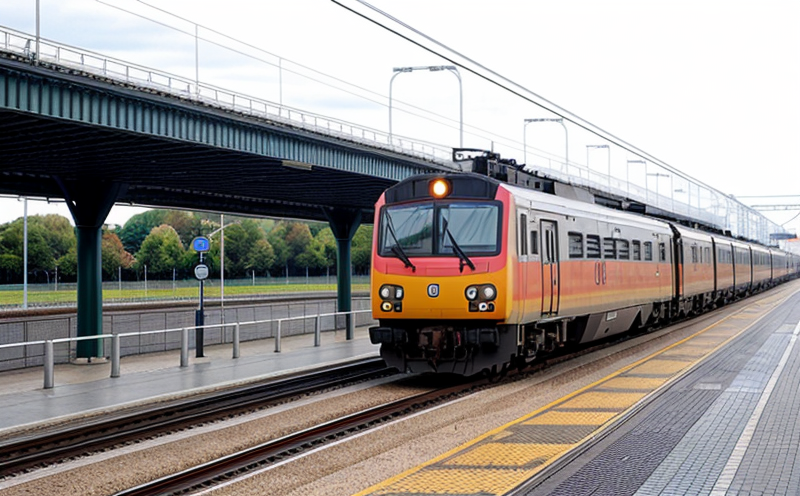ISO 3095 Railway Vehicle Exterior Noise Testing
The ISO 3095 standard is a critical component in ensuring that railway vehicles meet stringent noise emission regulations. This testing procedure focuses on the external noise generated by railway vehicles during operation, aiming to minimize environmental impact and enhance public safety.
Compliance with this standard is essential for manufacturers of rolling stock as it ensures that their products do not exceed permitted noise levels set forth in national and international laws. The test involves measuring sound pressure levels at specific points around the vehicle while it operates under controlled conditions, simulating real-world scenarios such as urban environments or high-speed tracks.
The testing process typically begins with thorough preparation of both the equipment used for measurement and the railway vehicle itself. This includes ensuring that all components are properly installed according to manufacturer specifications before being placed on a designated test track or in a soundproof chamber. Once ready, the vehicle undergoes various runs at different speeds and under varying load conditions to capture comprehensive data.
During these trials, advanced acoustic instruments continuously monitor noise emissions from every direction of the vehicle. Advanced signal processing techniques are employed to eliminate background interference and focus solely on the sound produced by the train itself. After collecting sufficient data points, engineers analyze results using statistical methods provided within ISO 3095 guidelines.
Based on these analyses, adjustments can be made either during manufacturing stages or post-production modifications aimed at reducing overall noise output if necessary. Compliance with this standard also opens up opportunities for manufacturers to gain competitive advantages by meeting increasingly stringent regulatory requirements ahead of time.
The importance of ISO 3095 lies in its role as a benchmark for evaluating the effectiveness of sound reduction measures implemented on railway vehicles. By adhering strictly to the procedures outlined in this international standard, companies can demonstrate their commitment to sustainable development and contribute positively towards reducing noise pollution caused by transportation activities.
It is worth noting that while ISO 3095 provides a framework for testing exterior noise emissions from passenger trains, similar principles apply to freight locomotives as well. As technology advances, so too do the expectations placed upon manufacturers regarding noise management practices; thus maintaining compliance with relevant standards will remain crucial.
Applied Standards
| Standard Number | Description |
|---|---|
| ISO 3095:1998 | Acoustics—Railway vehicles—Determination of exterior noise level during operation at normal speed. |
| EN ISO 3095 | Equivalent European standard for the same purpose. |
Benefits
- Maintains regulatory compliance by ensuring that railway vehicles meet specified noise limits.
- Promotes safer urban environments where trains operate frequently, reducing potential health risks associated with excessive noise exposure.
- Enhances brand reputation among eco-conscious consumers who appreciate sustainable practices.
- Facilitates smoother integration of new models into existing networks without causing disruptions due to higher-than-acceptable noise levels.
International Acceptance and Recognition
- The ISO 3095 standard is widely adopted across Europe, Asia, North America, and other regions where railways play a significant role in public transportation.
- Countries like Germany, France, Japan, the United States, and Canada have national standards that align closely with or are based on ISO 3095 guidelines.





